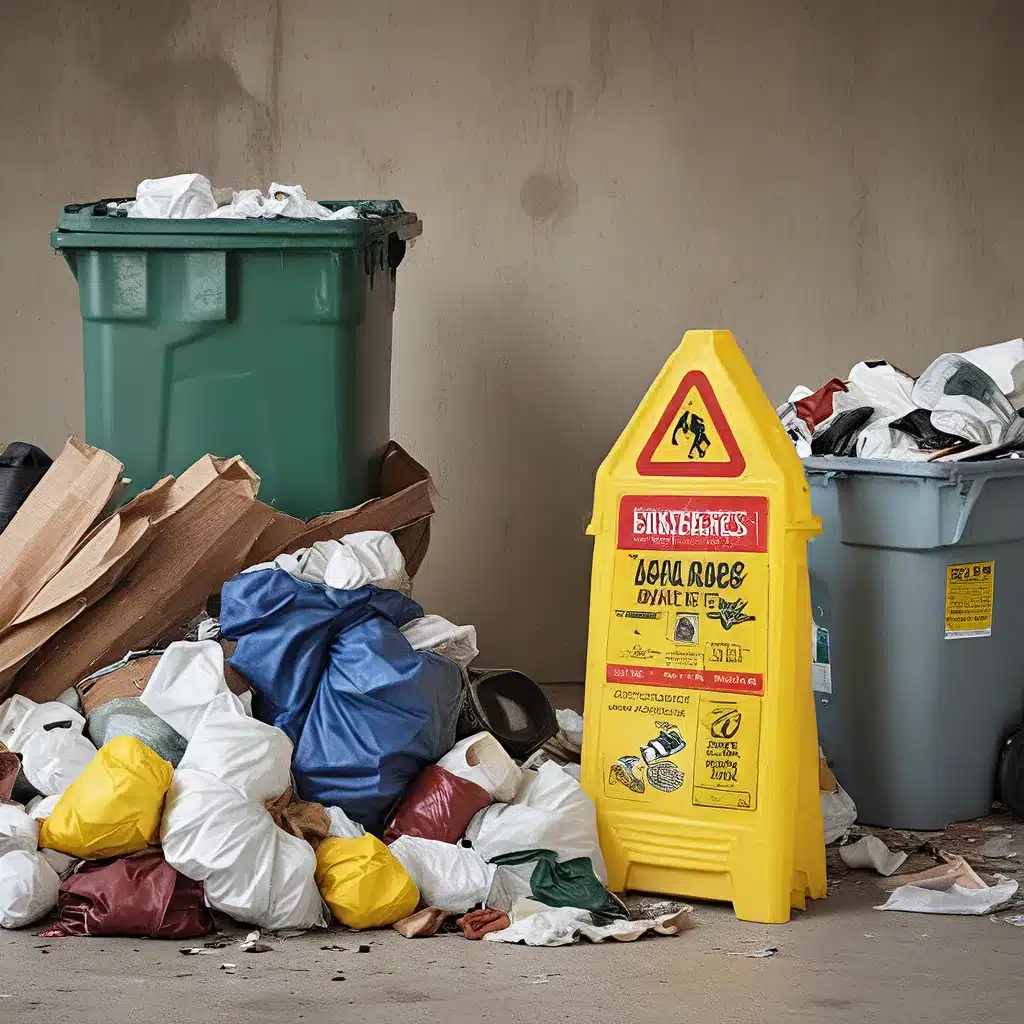Ah, the joys of home ownership – tinkering with the car, sprucing up the yard, and keeping those pesky pests at bay. But you know what they say, “with great power comes great responsibility.” And when it comes to the hazardous household waste lurking in our cabinets and garages, that responsibility can feel as daunting as tackling a DIY project gone wrong.
The Hazardous Household Waste Dilemma
Let’s face it, we’re all guilty of it – that half-empty can of paint remover, the old batteries gathering dust, or the leftover insecticide that’s been sitting in the shed for who knows how long. These seemingly innocuous items can actually be hazardous to our health and the environment if not disposed of properly.
The U.S. Environmental Protection Agency (EPA) defines four major types of hazardous waste: corrosive, toxic, ignitable, and reactive. These can include common household products like paints, cleaners, oils, batteries, and pesticides – the very items we use to maintain our homes and keep our families safe.
But here’s the kicker – just because we use these products at home doesn’t mean we can simply toss them in the trash or pour them down the drain. Oh no, that would be way too easy. In fact, improper disposal of hazardous household waste can lead to all sorts of environmental and health hazards, from contaminating water supplies to endangering sanitation workers.
The Dangers of Improper Disposal
Imagine this: you’ve got a half-empty can of paint thinner and you’re feeling a bit lazy. “Eh, I’ll just pour it down the sink,” you think to yourself. But wait, not so fast! That’s a big no-no.
If that paint thinner ends up in your home’s septic system or the municipal sewer, it can kill the helpful bacteria that break down the waste. And if it makes its way into nearby waterways, it can poison plants and wildlife. Heck, it only takes a single gallon of oil to ruin one million gallons of water! Talk about a recipe for disaster.
But the dangers don’t stop there. What if you decide to just toss that old can of paint in the garbage? Well, you’re putting the sanitation workers at risk of serious injuries, like burns, lung damage, or even losing their eyesight. And don’t even get me started on the potential for fires or explosions in the landfill.
And let’s not forget about the kiddos and furry friends. If you bury or dump that leftover antifreeze in the backyard, Fido might just come sniffing around and end up seriously poisoned. Yikes!
Responsible Disposal Solutions
Alright, so we’ve covered the scary stuff. But fear not, my friends, there are plenty of responsible ways to dispose of those hazardous household items. The key is proper storage and handling in the meantime.
First and foremost, store those hazardous products safely – on high shelves, in locked cabinets, and away from curious little hands (and paws). Make sure the labels are protected so you know what you’re dealing with, and always keep the containers tightly closed to prevent any leaks or spills.
And when it comes time to say goodbye to those old, unwanted products, don’t just toss them in the trash. Many communities have special collection programs for hazardous household waste to ensure it’s properly disposed of. Heck, you might even be able to find some eco-friendly alternatives that’ll do the job just as well, without all the hazardous ingredients.
If your community doesn’t have a dedicated hazardous waste program, check with your local authorities to see what your options are. They may be able to point you in the right direction or even offer guidance on safe disposal methods.
And remember, when it comes to cleaning services, the pros at Adam Cleaning are always here to lend a hand. They know a thing or two about handling hazardous materials, and they can help you navigate the sometimes confusing world of household waste disposal.
Embracing a Greener, Safer Future
Look, I get it – dealing with hazardous household waste can be a real headache. But the truth is, we all have a responsibility to protect our families, our communities, and our planet. By taking the time to properly store and dispose of those potentially dangerous products, we can minimize the risks and do our part to create a cleaner, greener future.
So the next time you’re staring down that half-empty can of bug spray or that leaky old car battery, don’t panic. Take a deep breath, do a little research, and find the right way to get rid of it. Your health, your loved ones, and the environment will thank you.
And who knows, you might even discover some awesome eco-friendly alternatives that work just as well, without all the hazardous baggage. The possibilities are endless, my friends. So let’s embrace the challenge, roll up our sleeves, and make the world a safer, cleaner place – one household hazard at a time.







